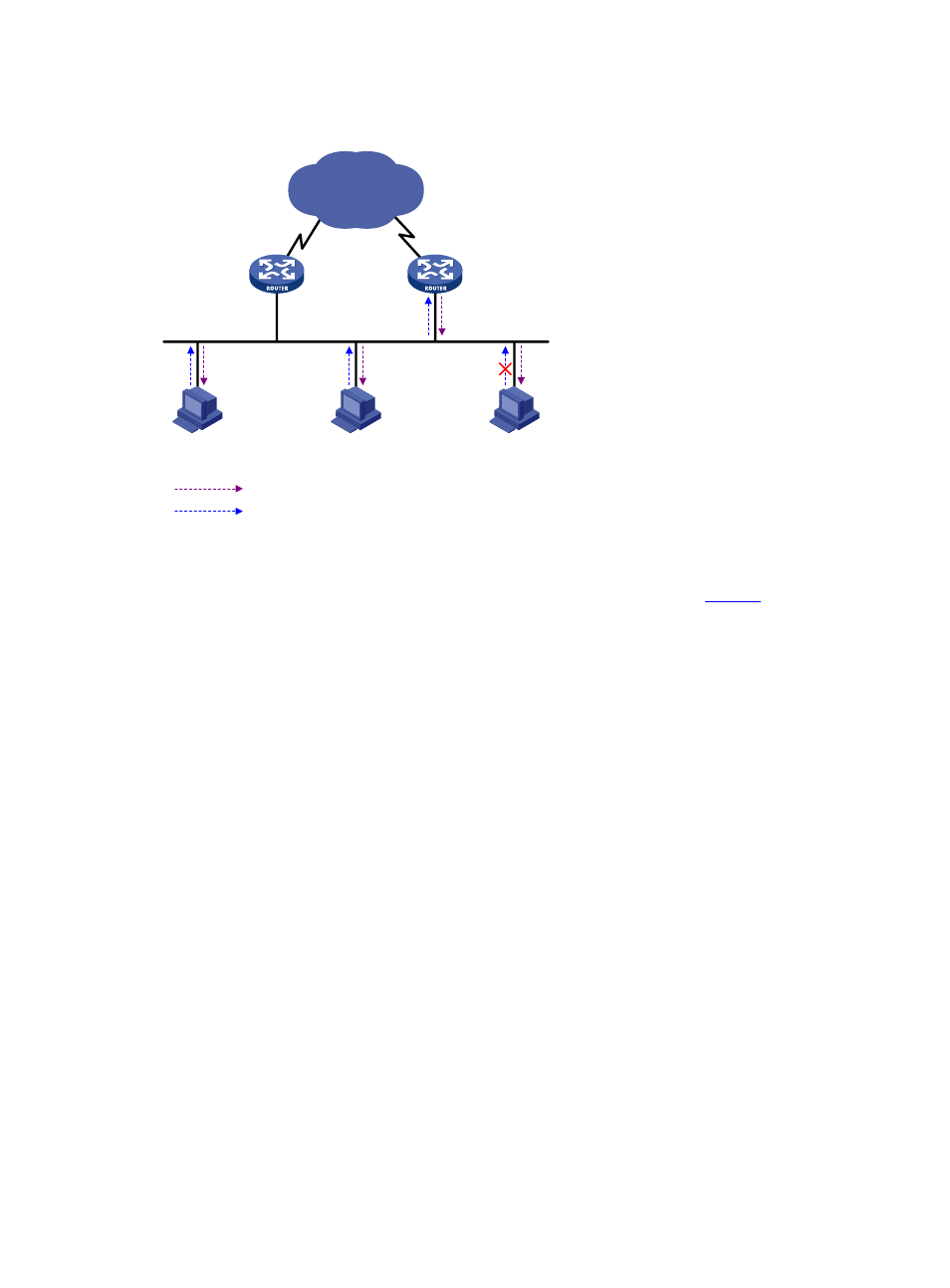H3C Technologies H3C SecPath F1000-E User Manual
Page 36

2
Figure 1 IGMP queries and reports
Query
Report
DR
Host A
(G2)
Host B
(G1)
Host C
(G1)
Ethernet
Router A
Router B
IP network
Assume that Host B and Host C are expected to receive multicast data addressed to multicast group G1,
while Host A is expected to receive multicast data addressed to G2, as shown in
. The following
describes how the hosts join the multicast groups and the IGMP querier (Router B in the figure) maintains
the multicast group memberships:
1.
The hosts send unsolicited IGMP reports to the addresses of the multicast groups that they want to
join, without having to wait for the IGMP queries from the IGMP querier.
2.
The IGMP querier periodically multicasts IGMP queries (with the destination address of 224.0.0.1)
to all hosts and routers on the local subnet.
3.
Upon receiving a query message, Host B or Host C (the delay timer of whichever expires first)
sends an IGMP report to the multicast group address of G1, to announce its membership for G1.
Assume it is Host B that sends the report message. Upon hearing the report from Host B, Host C,
which is on the same subnet with Host B, suppresses its own report for G1, because the IGMP
routers (Router A and Router B) already know that at least one host on the local subnet is interested
in G1. This mechanism, known as IGMP report suppression, helps reduce traffic on the local
subnet.
4.
At the same time, because Host A is interested in G2, it sends a report to the multicast group
address of G2.
5.
Through the above-mentioned query/report process, the IGMP routers learn that members of G1
and G2 are attached to the local subnet, and the multicast routing protocol (PIM for example)
running on the routers generates (*, G1) and (*, G2) multicast forwarding entries, which will be
the basis for subsequent multicast forwarding, where * represents any multicast source.
6.
When the multicast data addressed to G1 or G2 reaches an IGMP router, because the (*, G1)
and (*, G2) multicast forwarding entries exist on the IGMP router, the router forwards the multicast
data to the local subnet, and then the receivers on the subnet receive the data.
Because IGMPv1 does not specifically define a Leave Group message, when an IGMPv1 host leaves a
multicast group, it stops sending reports to the address of the multicast group it listened to. If no member
exists in a multicast group on the subnet, the IGMP router will not receive any report addressed to that
